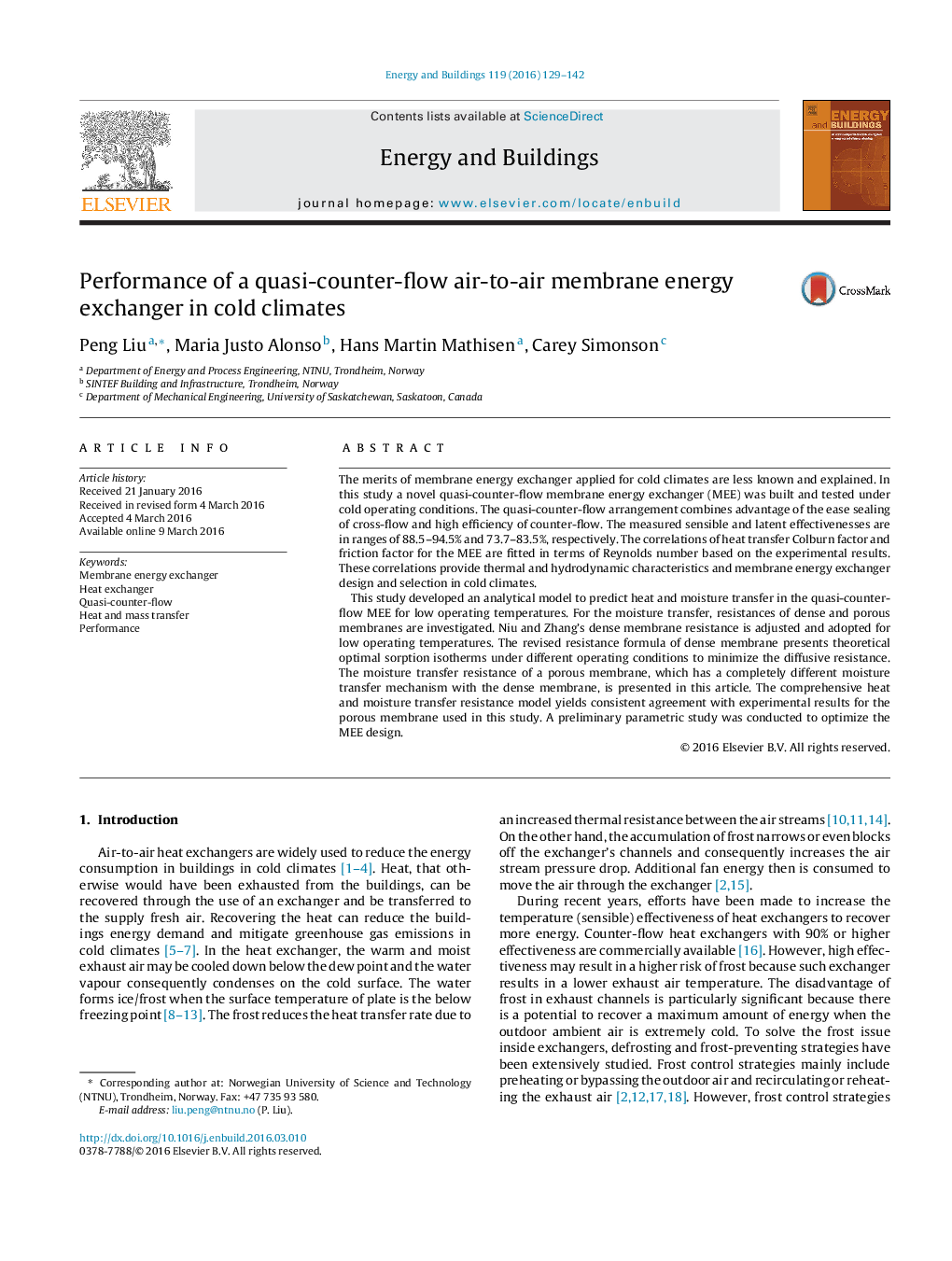| کد مقاله | کد نشریه | سال انتشار | مقاله انگلیسی | نسخه تمام متن |
|---|---|---|---|---|
| 262209 | 504016 | 2016 | 14 صفحه PDF | دانلود رایگان |
• Designed and constructed a quasi-counter-flow MEE.
• Investigated performance of the MEE for cold climates.
• Analyzed moisture transfer resistance across dense and porous membranes.
• Conducted parametric studies on the performance of the MEE.
The merits of membrane energy exchanger applied for cold climates are less known and explained. In this study a novel quasi-counter-flow membrane energy exchanger (MEE) was built and tested under cold operating conditions. The quasi-counter-flow arrangement combines advantage of the ease sealing of cross-flow and high efficiency of counter-flow. The measured sensible and latent effectivenesses are in ranges of 88.5–94.5% and 73.7–83.5%, respectively. The correlations of heat transfer Colburn factor and friction factor for the MEE are fitted in terms of Reynolds number based on the experimental results. These correlations provide thermal and hydrodynamic characteristics and membrane energy exchanger design and selection in cold climates.This study developed an analytical model to predict heat and moisture transfer in the quasi-counter-flow MEE for low operating temperatures. For the moisture transfer, resistances of dense and porous membranes are investigated. Niu and Zhang’s dense membrane resistance is adjusted and adopted for low operating temperatures. The revised resistance formula of dense membrane presents theoretical optimal sorption isotherms under different operating conditions to minimize the diffusive resistance. The moisture transfer resistance of a porous membrane, which has a completely different moisture transfer mechanism with the dense membrane, is presented in this article. The comprehensive heat and moisture transfer resistance model yields consistent agreement with experimental results for the porous membrane used in this study. A preliminary parametric study was conducted to optimize the MEE design.
Journal: Energy and Buildings - Volume 119, 1 May 2016, Pages 129–142
